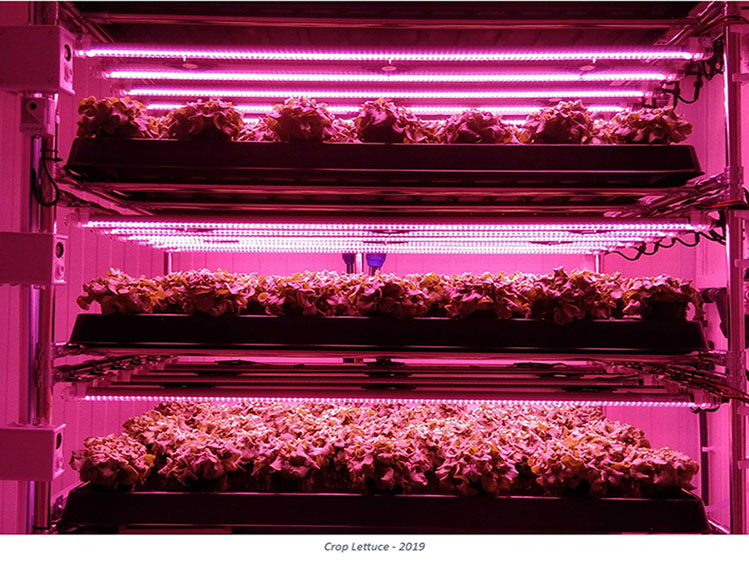
Vertical farming is undoubtedly the most productive way of using each m2 to grow vegetables and leafy greens. There is no other cultivation method that can be compared to the water use efficiency of an indoor farm, where water just works in a cycle, as the transport method of nutrients and minerals. Vertical Farming in indoor controlled environments also benefit from harvest predictability and uniformity as well as faster growth rates without pesticides.

Water Cycle: Irrigation + Transpiration + Condensation
In a simple way: Water is mixed with the nutrient recipe and is fed to the plants in a scheduled manner, saturating the roots and existing substrate. Through the roots plants will pump this solution to the leaves or fruits release it to the surrounding environment… water has now filled its purpose! Water is than collected from the air using a dehumidifier (more about it on CEA Equipment) which serves both a need (to lower the air relative humidity) and an utility (retrieve water back)
Ventilation is something that should not be overlooked since it is not only required to cool your plants leafs and facilitate transpiration as it is to keep pests under control. In vertical farming where plants are tighter either side by side and on top of each other so it is important to pay attention to all plant spaces in terms of airflow.
Let there be light!
Lights, quality and quantity are one of the most important factors to have into account when setting up a new vertical farm. This is the equipment where most of the investment will hover around in CAPEX and also the most important factor in OPEX.
Before investing in lighting, you should have a clear understanding and some answers to the following topics and questions :
- Your Crop(s) Necessities :
Will you be growing vegetative, flowering, or both plant stages ?
What’s the highest useful intensity your plant can take? - Fixtures Power Consumption and Power Factor:
What is the light technology ?
How much light inside PAR levels will you get per W (μmol·s–¹·W–¹) ? - Size of Grow Area(s) and Distance Lights-Canopy
The size of your shelves, grow tables on floor area ?
The fixture format and lighting angle?
The distance of the lights to the canopy ? - Cooling Capabilities of your set-up
How will you cool down / remove the heat from the lamps? - Balance Between all Variables
Do your lights make sense according to the conditions you can maintain?
Grow Structures
You will need to find the structure that best serves your purpose and that fits all the elements with each other and with the available space. Besides this you will also need to be sure it can stand the weight you are going to putting on it ( don’t forget 1L H2O = 1 Kg during irrigation + the weight of full grown plants), the logistics: including the ease of inspection and plant removal , the ease of access to all levels ( height), ease of cleaning.
A fundamental factor is the type of materials and stability of it. You will neither want to substitute all your structures due to rust nor will you want it all falling on you!
Grow Chamber
If you want to do it right you will need to have an isolated chamber. This will help keep your space clean and free of pests, to better maintain the desired climate conditions and the overall efficiency of your equipment.
Monitoring and Automation
Especially important in this type of cultivation (its important for all!) to have a good monitor system integrated with your equipment in order, to create schedules, set-points and alarms. Depending on your level of investment and sophistication desired you can automate everything or just a few things or even just monitor and record historical values.
Conclusion
We would need several tiny articles like this one to properly explain all the factors to have into account when setting up a vertical farm. Besides all equipment required and how to properly dimension it, it is equal important to have some knowledge on plant science, thermodynamics and a well thought protocol that you follow so that everything runs smooth!
